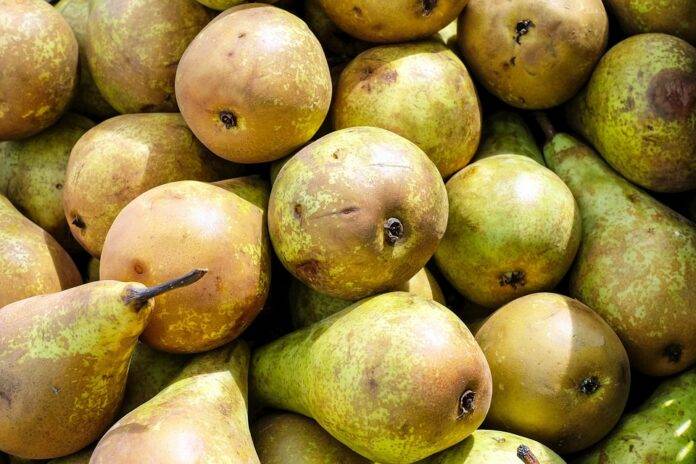Introduction
The global pear industry is experiencing a transformative phase, driven by advancements in artificial intelligence (AI) and automation technologies. These innovations are reshaping the production, distribution, and marketing of pears, enhancing efficiency, productivity, and sustainability. This report outlines the top 10 AI and automation solutions tailored for pear production and distribution, focusing on their functionalities, financial implications, and market volumes.
1. Precision Agriculture Solutions
Precision agriculture involves using technology to monitor and manage field variability in crops. For pear production, this means optimizing resources such as water, fertilizers, and pesticides.
Key Players
Companies like Trimble and AG Leader Technology lead the market, offering advanced GPS and sensor technologies to improve yield.
Financial Overview
The global precision agriculture market is projected to reach $12 billion by 2027, with a CAGR of 12% from 2020 to 2027. Implementing precision agriculture can reduce input costs by up to 20%, significantly impacting pear producers’ bottom lines.
2. AI-Driven Crop Monitoring Systems
AI-driven crop monitoring systems utilize drones and satellite imagery to assess the health of pear orchards. These systems can identify issues such as pest infestations or nutrient deficiencies.
Examples
Companies like Climate Corporation and IBM’s Watson are leveraging AI to provide farmers with actionable insights based on real-time data analysis.
Market Impact
The crop monitoring market is expected to reach $4.9 billion by 2025. The use of AI can lead to a 15% increase in yield due to timely interventions based on data analysis.
3. Automated Irrigation Systems
Automated irrigation systems utilize AI algorithms to manage water supply based on real-time weather data and soil moisture levels.
Leading Technologies
Companies like Netafim and Rachio offer smart irrigation solutions that automate watering schedules, reducing water wastage.
Financial Benefits
Pear producers can save up to 30% on water expenses, translating to significant savings as water costs continue to rise globally.
4. Supply Chain Management Software
Effective supply chain management is crucial for the timely distribution of pears, ensuring freshness and reducing spoilage.
Key Solutions
Platforms like SAP Integrated Business Planning and Oracle SCM Cloud provide end-to-end visibility and control over the supply chain.
Market Trends
The global supply chain management market is projected to grow to $37 billion by 2027. Effective management can reduce logistics costs by 15%, which is essential for perishable goods like pears.
5. Predictive Analytics Tools
Predictive analytics utilizes historical data to forecast future trends in pear production and sales, enabling better decision-making.
Leading Providers
Companies such as SAS and Tableau are at the forefront, offering tools that help pear producers anticipate market demand and adjust production accordingly.
Financial Insights
Implementing predictive analytics can improve sales forecasts by 20%, leading to more efficient production planning and reduced waste.
6. Smart Harvesting Technologies
Harvesting is one of the most labor-intensive processes in pear production. Smart harvesting technologies, including robotic harvesters, are revolutionizing this aspect.
Notable Innovations
Fruition Sciences and Harvest CROO Robotics are developing automated harvesting systems that can significantly reduce labor costs and increase harvesting efficiency.
Market Impact
The market for agricultural robotics is expected to reach $20 billion by 2025. Automated systems can reduce labor costs by approximately 50%, providing a substantial financial advantage.
7. AI-Powered Quality Control Systems
Ensuring the quality of pears during production and distribution is vital for maintaining market standards.
Key Technologies
AI-powered vision systems from companies like Aibotix and eAgronom can automate quality control processes, identifying defects in pears before they reach consumers.
Financial Implications
Implementing AI quality control can reduce spoilage rates by up to 30%, directly impacting profitability.
8. E-commerce and Direct-to-Consumer Platforms
With the rise of online shopping, e-commerce platforms tailored for fruit distribution are becoming increasingly important.
Leading Platforms
Companies like Shopify and BigCommerce provide solutions that enable pear producers to sell directly to consumers, bypassing traditional distribution channels.
Market Trends
The global e-commerce market for fresh produce is expected to grow by 15% annually, with direct-to-consumer sales providing higher margins for producers.
9. Blockchain for Traceability
Blockchain technology is gaining traction in the agricultural sector, providing traceability from farm to table, which is crucial for consumer confidence.
Key Players
Companies like IBM and VeChain are implementing blockchain solutions that enhance transparency in the pear supply chain.
Financial Benefits
Adopting blockchain can reduce recall costs by up to 75%, making it a valuable tool for pear producers concerned about quality and safety.
10. Virtual Reality (VR) and Training Solutions
Training workers in pear production and distribution can be enhanced through VR technologies, providing immersive learning experiences.
Leading Technologies
Companies like Oculus and Strivr are creating VR training programs that can improve workforce skills quickly and effectively.
Market Implications
Investing in VR training can reduce onboarding time by 50%, resulting in a more efficient workforce in pear production and distribution.
Conclusion
The integration of AI and automation technologies in pear production and distribution is not just a trend but a necessity for enhancing efficiency, reducing costs, and improving overall quality. As the global pear industry continues to evolve, embracing these top 10 solutions will be crucial for producers looking to thrive in a competitive market.




